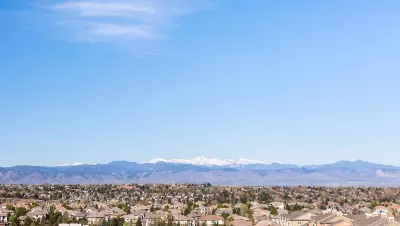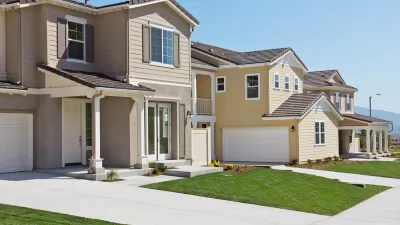Expensive homes dominated the metro Denver real estate market in 2020.

"Metro Denver’s worsening imbalance between supply and demand has 2021 starting out with annual home price appreciation solidly into double-digit territory," reports
Aldo Svaldi, sharing data from a Market Trends Report published recently by the Denver Metro Association of Realtors.
"The average price of a single-family home that closed in January in metro Denver rose 2.9% from December to a record $629,159," Svaldi writes. That kind of monthly appreciation added up over the course of the year. "Annual price appreciation is running a hot 18.7%," adds Svaldi.
The sharp increase is caused by an overwhelming share of home sales occurring at the upper end of the market, according to the report. "For example, there were 70% more homes worth $1 million or more sold last month compared to January 2020, while there were 45.4% fewer homes sold in the $300,000 range and an 11.2% drop in homes sold in the $400,000 range."
All that data is also influenced by record low levels of inventory on the market. "After reaching an all-time low at the end of December, the number of active listings dipped another 8.9% in January to 2,316. Buyers last month had less than half as many properties to choose from as they did in January 2020 and compared to the average inventory going back to 1985, 83% fewer options available," according to Svaldi.
FULL STORY: In metro Denver housing market, double-digit price gains carry over in 2021

Planetizen Federal Action Tracker
A weekly monitor of how Trump’s orders and actions are impacting planners and planning in America.

Trump Administration Could Effectively End Housing Voucher Program
Federal officials are eyeing major cuts to the Section 8 program that helps millions of low-income households pay rent.

The 120 Year Old Tiny Home Villages That Sheltered San Francisco’s Earthquake Refugees
More than a century ago, San Francisco mobilized to house thousands of residents displaced by the 1906 earthquake. Could their strategy offer a model for the present?

Philadelphia Councilmember Proposes Transit Access Fund
The plan would allocate 0.5 percent of the general fund toward mobility subsidies for low-income households.

Texas Bill Would Ban Road Diets, Congestion Pricing
A Texas state senator wants to prevent any discussion of congestion pricing and could suspend existing bike lane and sidewalk projects.

USDOT Threatens to Pull New York Highway Funding
The Trump administration wants the state to kill New York City’s congestion pricing program despite its demonstrated success.
Urban Design for Planners 1: Software Tools
This six-course series explores essential urban design concepts using open source software and equips planners with the tools they need to participate fully in the urban design process.
Planning for Universal Design
Learn the tools for implementing Universal Design in planning regulations.
Ada County Highway District
Clanton & Associates, Inc.
Jessamine County Fiscal Court
Institute for Housing and Urban Development Studies (IHS)
City of Grandview
Harvard GSD Executive Education
Toledo-Lucas County Plan Commissions
Salt Lake City
NYU Wagner Graduate School of Public Service





























